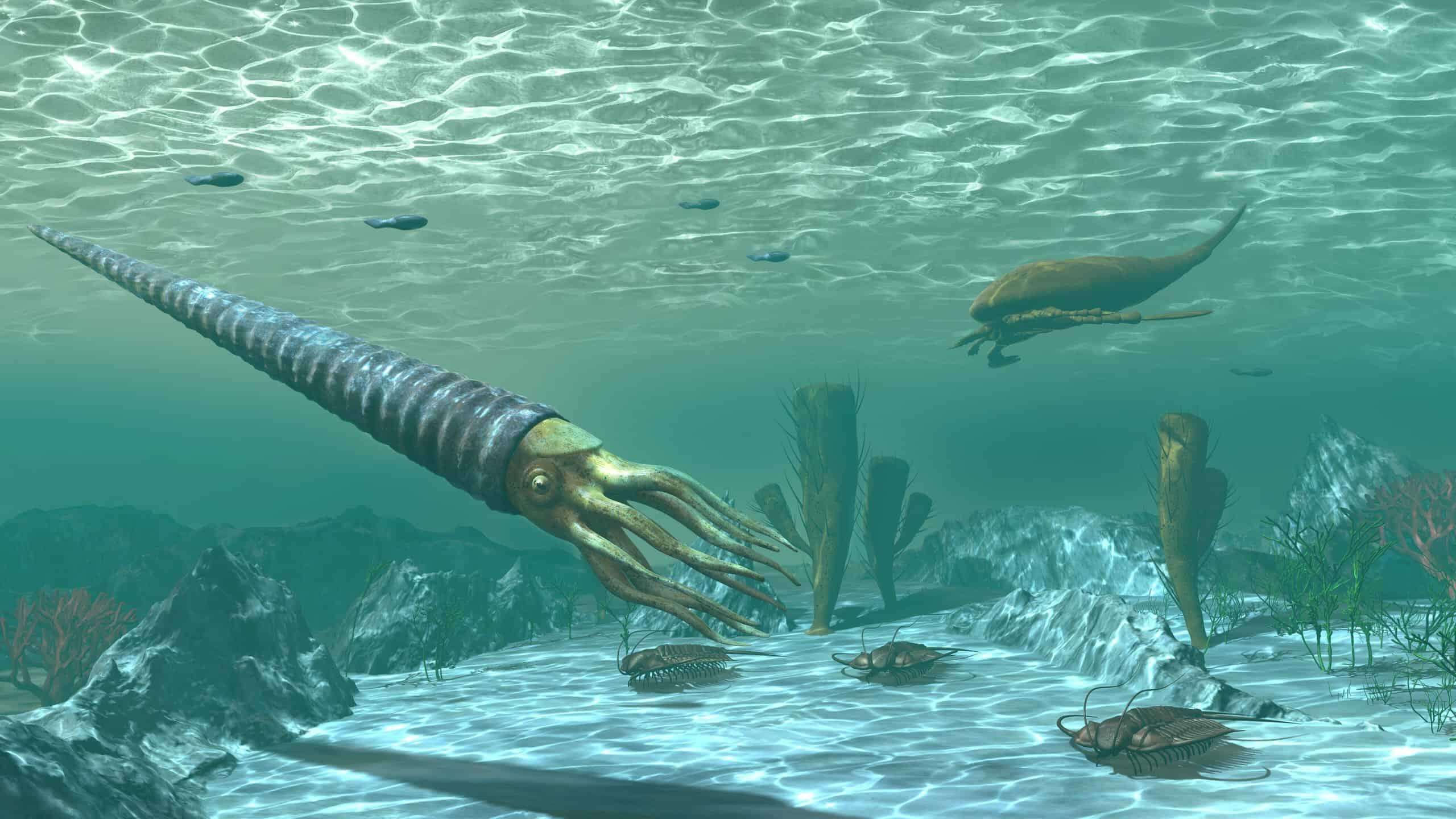
What was the Ordovician Period? The Ordovician Period was a time long before dinosaurs roamed the Earth. It spanned from about 485 million to 443 million years ago. During this period, life flourished in the oceans, giving rise to diverse marine species like trilobites, brachiopods, and the first coral reefs. The climate was generally warm, and sea levels were high, creating shallow seas that covered much of the continents. This period also saw the first appearance of fish and early land plants. However, it ended with a massive extinction event, wiping out nearly 85% of marine species.
Ordovician Period Overview
The Ordovician Period is a fascinating chapter in Earth's history. It spanned from approximately 485 million to 443 million years ago. This era saw significant changes in climate, geography, and life forms.
- The Ordovician Period followed the Cambrian Period and preceded the Silurian Period.
- It lasted around 42 million years, making it one of the longer periods in the Paleozoic Era.
- During this time, Earth's climate was generally warm, but it ended with a major ice age.
Marine Life Flourished
The oceans teemed with life during the Ordovician. Marine biodiversity exploded, leading to the development of many new species.
- Trilobites, a type of arthropod, were abundant and diverse.
- Brachiopods, which resemble clams, were common and varied in form.
- The first coral reefs began to form, providing habitats for many marine creatures.
- Nautiloids, early relatives of squids and octopuses, were top predators in the seas.
- Graptolites, colonial animals, floated in the oceans and are now important index fossils.
Geological Changes
The Earth's surface underwent significant transformations during the Ordovician. Tectonic activity reshaped continents and ocean basins.
- Gondwana, a supercontinent, drifted towards the South Pole.
- The Iapetus Ocean, an ancient ocean, began to close as continents collided.
- Volcanic activity was prevalent, contributing to the formation of new landmasses.
- The Taconic Orogeny, a major mountain-building event, occurred in what is now North America.
Climate and Environment
The Ordovician climate saw dramatic shifts, impacting life and the environment.
- Early in the period, the climate was warm and tropical.
- Sea levels were high, creating shallow marine environments.
- Towards the end, a significant ice age caused sea levels to drop.
- Glaciation led to mass extinctions, affecting many marine species.
Evolutionary Milestones
The Ordovician Period was a time of evolutionary innovation. Many new life forms emerged, setting the stage for future developments.
- The first jawless fish, or agnathans, appeared in the oceans.
- Early land plants, such as liverworts, began to colonize terrestrial environments.
- The first evidence of terrestrial arthropods, like early spiders and millipedes, dates back to this period.
- Conodonts, tiny tooth-like fossils, are believed to be the remains of early vertebrates.
Fossil Discoveries
Fossils from the Ordovician provide valuable insights into ancient life and environments.
- The Burgess Shale in Canada contains well-preserved Ordovician fossils.
- The Fezouata Formation in Morocco is another rich fossil site from this period.
- Ordovician fossils are found on every continent, indicating widespread marine environments.
- Fossilized remains of giant sea scorpions, or eurypterids, have been discovered from this time.
Mass Extinction Event
The Ordovician ended with one of the largest mass extinctions in Earth's history.
- This extinction event wiped out approximately 85% of marine species.
- It is believed to have been caused by a combination of climate change and glaciation.
- The extinction event paved the way for new species to evolve in the subsequent Silurian Period.
- Recovery from the extinction took millions of years, leading to new ecosystems and life forms.
Impact on Modern Science
The Ordovician Period continues to influence modern scientific research and understanding.
- Studying Ordovician fossils helps scientists understand ancient climates and environments.
The Ordovician Period's Legacy
The Ordovician Period left a lasting mark on Earth's history. This era saw the rise of diverse marine life, including the first coral reefs and jawless fish. The period also witnessed significant geological changes, like the formation of the Appalachian Mountains. Despite its rich biodiversity, the Ordovician ended with a massive extinction event, wiping out nearly 85% of marine species. This extinction reshaped life on Earth, paving the way for new species to evolve. Understanding the Ordovician helps scientists piece together the puzzle of our planet's past, offering insights into how life and environments have changed over millions of years. The legacy of the Ordovician is a testament to the ever-changing nature of Earth, reminding us of the delicate balance that sustains life.
Was this page helpful?
Our commitment to delivering trustworthy and engaging content is at the heart of what we do. Each fact on our site is contributed by real users like you, bringing a wealth of diverse insights and information. To ensure the highest standards of accuracy and reliability, our dedicated editors meticulously review each submission. This process guarantees that the facts we share are not only fascinating but also credible. Trust in our commitment to quality and authenticity as you explore and learn with us.
